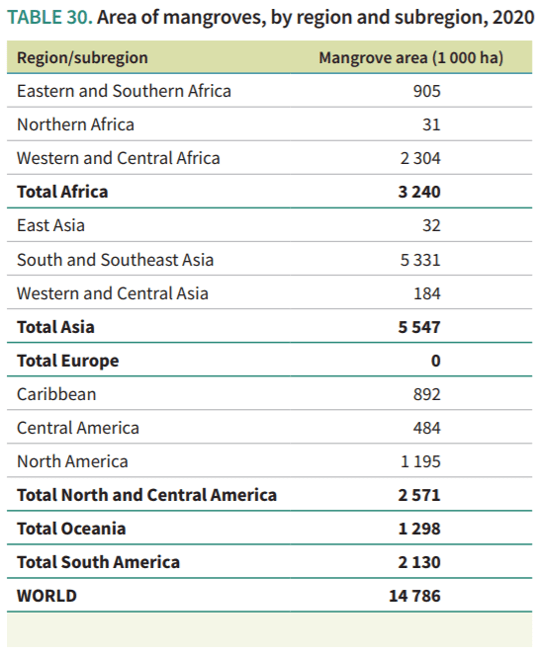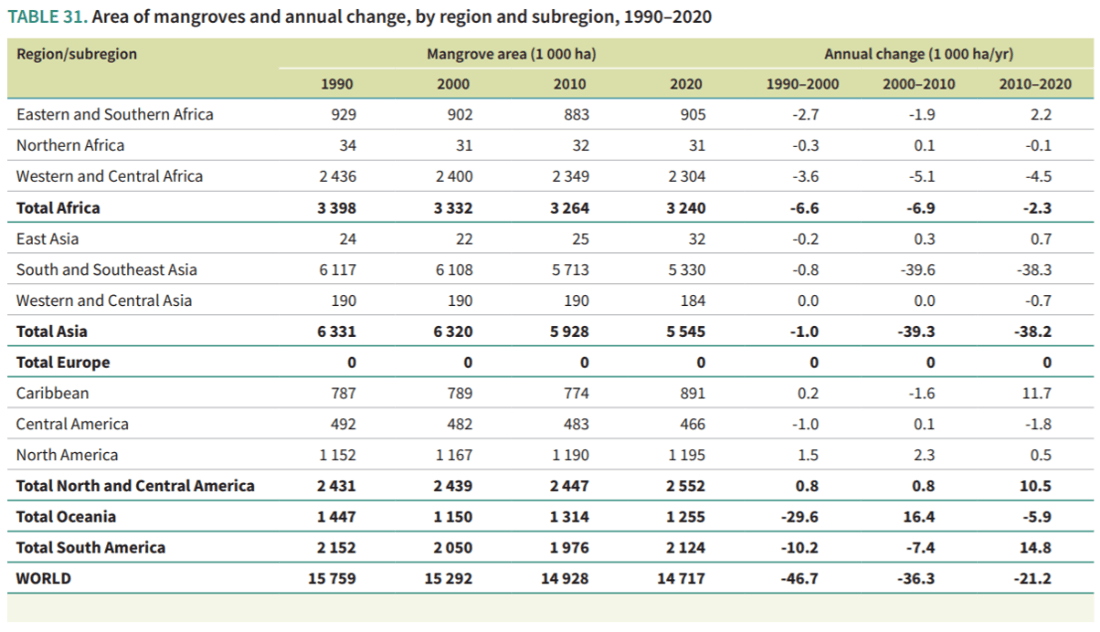FAO reviews 30 years of global forest data
Mangrove forests are in decline, but rate of loss is slowing
Last month, the Food and Agriculture Organization of the United Nations (FAO) released their Global Forest Resources Assessment (FRA) for 2020. The report is published every five years (starting in 1990) and compiles forestry data from 236 countries and territories.
Overarching statistics are captured for natural, planted, and primary forests. Mangroves are categorized as a primary forest—where there has been minimal human activity and disturbance—and therefore have their own dedicated section.
Following are excerpts of the report’s assessment on mangroves.
“FRA 2020 received information on mangroves for 2020 from 223 countries and territories, of which 113 indicated that they have areas of mangrove forest”

© FAO
“More than 40 percent of the global area of mangroves is in four countries: Indonesia (19 percent of the global total), Brazil (9 percent), Nigeria (7 percent) and Mexico (6 percent).”
“Globally, the area of mangroves decreased by 1.04 million ha between 1990 and 2020 (Table 31). The rate of loss more than halved over the three decades, from 46 700 ha per year in 1990–2000, to 36 300 ha per year in 2000– 2010, to 21 200 ha per year in the most recent decade.”

© FAO
“There was a substantial increase in the average annual rate of mangrove loss in Asia, from 1,030 ha in 1990–2000 to 38,200 ha in 2010–2020. The increased rate of loss was due mainly to Indonesia, which reported an average annual loss of 6,800 ha in 1990–2000 and 21,100 ha in the most recent decade.”
These reports are, and will continue to be, used for the UN’s sustainable development goal regarding Life on Land – indicators 15.1.1 and 15.2.1. Overall rate of loss has slowed for mangroves and all forests globally, but there is still work to be done. FAO experts expect that a global halt on deforestation will take another 25 years to achieve.
This report helps to highlight specific countries and regions that need attention and the Global Mangrove Alliance will continue to push for conservation and restoration of coastal ecosystems.
An interactive map of global mangrove data, updated regularly, is available from the Global Mangrove Watch here.
The full report is available here.